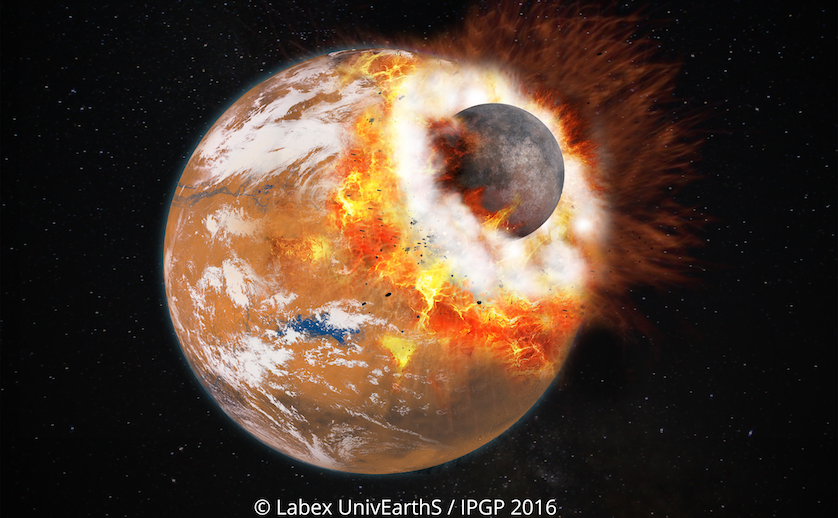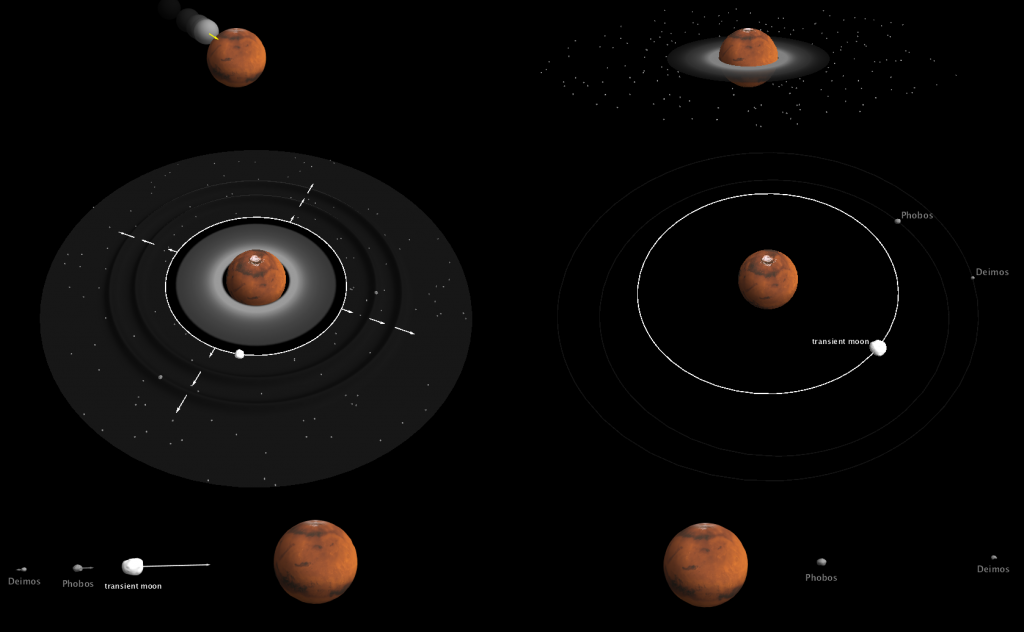A reappraisal of the origin of Mars’ moons
The planet Mars has two small moons, Phobos and Deimos. They have long been thought to be asteroids captured by Mars. Yet the shape and orientation of their orbit seem to rule out this hypothesis.
A team of Belgian, French, and Japanese scientists, led by Dr Pascal Rosenblatt at the Royal Observatory of Belgium, suggests that Phobos and Deimos formed by accretion of debris following a giant collision between Mars and a primitive body three times as small. This collision may have erased the surface of the northern hemisphere of Mars, as well as imparted to Mars its rotation, giving to Mars day-and-night cycles as on Earth. The mechanism requires that Mars once had additional, now-lost moons, which have appropriately collected the debris to form Phobos and Deimos. The proposed scenario explains why Mars has two moons instead of one like Earth.
This work paves the way to new studies on the formation of the Martian moon system and, more generally, on the formation of moons in solar and extra-solar systems.
New insights can be expected in a close future. The Japanese space agency JAXA is planning a sample return mission to Phobos for 2022. The European and Russian space agencies ESA and Roscosmos are also planning a similar joint mission for 2024.
These results are published in Nature Geoscience.
In pictures
- (Top) Mars is violently hit by a proto-planet three times as small. The debris form a disc in a few hours.
- (Middle) A large moon rapidly emerges from the disc close to the planet. As it migrates away from Mars, its two zones of (so-called “resonant”) influence propagate like ripples, facilitating accretion of debris further away into two small satellites, Phobos and Deimos, in a few thousand years.
- (Bottom) Due to tides raised by Mars, the large moon falls back to Mars in a few million years, while the smaller Phobos and Deimos reach their present position around Mars within the next billion years.
Video
Links
- http://www.elsi.jp/en/news/2016/07/20160705genda.html
- http://univearths2.in2p3.fr/fr/2016/06/28/phobos-deimos/
- https://www.univ-rennes1.fr/actualites/01072016/impact-geant-et-lunes-disparues-origines-de-phobos-et-deimos-satellites-de-mars
Contacts
Dr Pascal Rosenblatt <pascal.rosenblatt@oma.be> +32 2 3736730
Dr Jan Cuypers <jan.cuypers@oma.be> +32 2 3730234
Illustration 1: Labex UnivEarths / Université Paris Diderot (hi-res)
Illustration 2: Antony Trinh / Royal Observatory of Belgium (hi-res)


